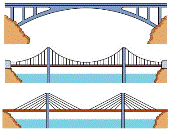Civil and Environmental Engineering, Department of

Department of Civil and Environmental Engineering: Faculty Publications
Document Type
Article
Date of this Version
2018
Citation
Environ Eng Sci. 2018 May 1; 35(5): 462–471. doi:10.1089/ees.2017.0275.
Abstract
Use of biotrickling filter (BTF) for gas phase treatment of volatile trihalomethanes (THMs) stripped from water treatment plants could be an attractive treatment option. The aim of this study is to use laboratory-scale anaerobic BTF to treat gaseous chloroform (recalcitrant to biological transformation) as a model THM and compare results with aerobic BTF. Additional investigations were conducted to determine the microbial diversity present within the BTFs. Chloroform is a hydrophobic volatile THM known to be difficult to biodegrade. To improve the degradation process, ethanol was used as a cometabolite at a different ratio to chloroform. The experimental plan was designed to operate one BTF under anaerobic condition and the other one under aerobic acidic condition. Higher elimination capacity (EC) of 0.23 ± 0.01 g/[m3·h] was observed with a removal efficiency of 80.9% ± 4% for the aerobic BTF operating at pH 4 for the concentration ratio of 1:40 chloroform to ethanol. For similar ratio, the anaerobic BTF supported lower removal efficiency of 59% ± 10% with corresponding lower EC of 0.16 ± 0.01 g/[m3·h]. Carbon recovery acquired for anaerobic and aerobic BTFs was 59% and 63%, respectively. The loading rate for chloroform on both BTFs was 0.27 g/[m3·h] (per m3 of filter bed volume). Variations of the microbial community were attributed to degradation of chloroform in each BTF. Azospira oryzae and Azospira restrica were the dominant bacteria and potential candidates for chloroform degradation for the anaerobic BTF, whereas Fusarium sp. and Fusarium solani were the dominant fungi and potential candidates for chloroform degradation in the aerobic BTF.


Comments
2020 Authors